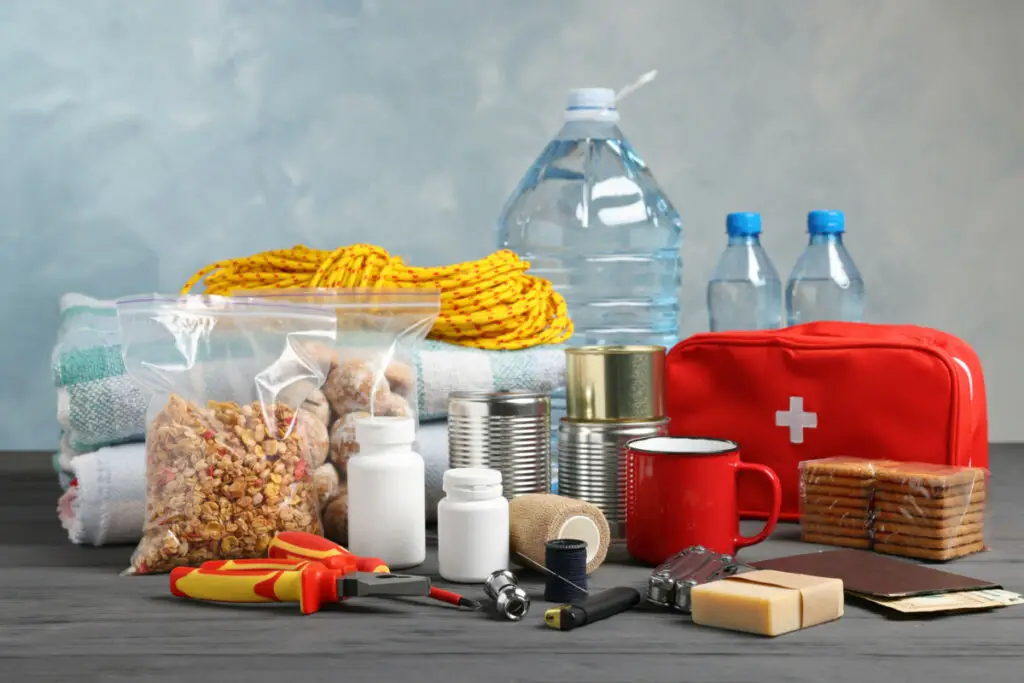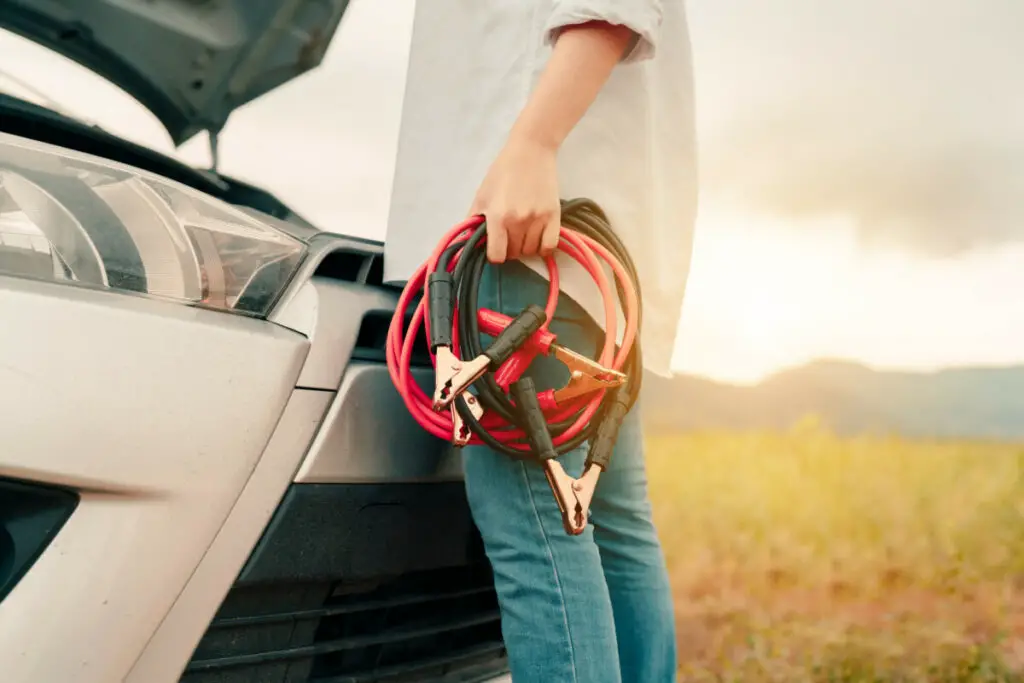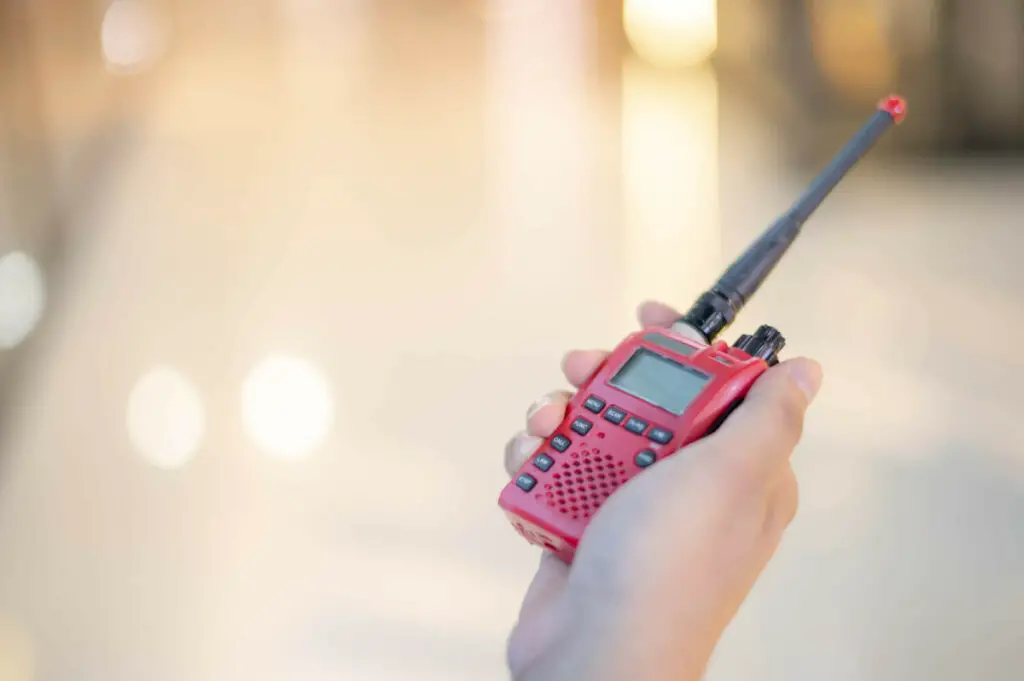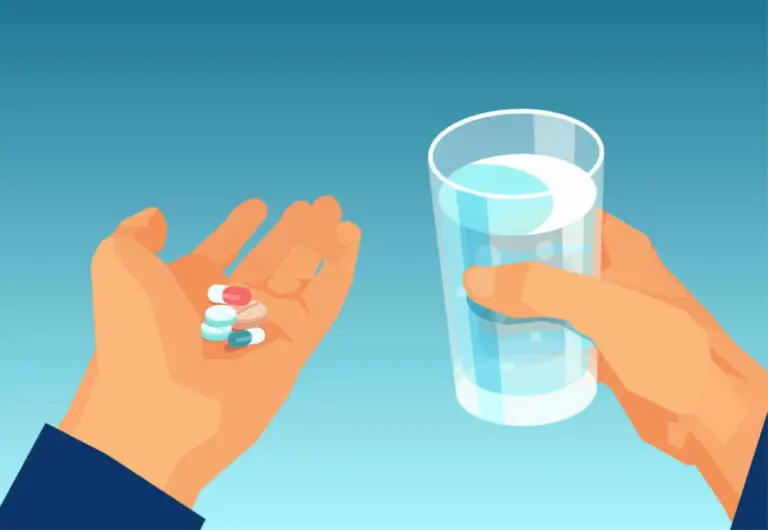
There may come a time when you will need to take action when an emergency occurs either around or within your car. When this happens, your car must have the necessary emergency preparedness equipment to perform your emergency duties effectively.
Here, I will share 12 items that you must have in your car to be ready for emergencies.
1. Pocket Knife/Multitool
Perhaps one of the most widely accessible items that you can have, even outside of your car, is a pocket knife or some other multitool capable of performing a variety of duties such as sawing, prying, cutting, and screwing/unscrewing to name a few.
The pocket knife or multitool is especially handy when you need to apply first aid on someone such as cutting bandages with the included knife blade or scissors and removing debris with the tweezers.
Many multitools will also include a small screwdriver bit. This can be handy for helping you get inside electronics you’re using that could malfunction. The screwdriver bit may also help make your other emergency tools more useful by allowing you to replace flashlight or radio batteries.
Basically, for any emergency and survival situation, a pocket knife or multitool will significantly increase the chances of survival if utilized well.
2. First-Aid Kit
A first-aid kit is one thing that we are always taught to have ready in our homes, so it should come as no surprise that this applies to preparing one for car usage as well.
When emergencies occur, they can be from anywhere, everywhere. When you are out on a long road trip, you will be grateful that you have a first-aid kit ready
An event that commonly warrants the administration of first-aid is a minor vehicle accident such as a collision. Serious injuries can be treated until you can get professional help and minor injuries can be solved altogether by a good first-aid kit.
Drivers, passengers, and all other bystanders are at risk to be involved in an accident, so make sure you have plenty of supplies.
A car first-aid kit should include these items in generous quantities:
- Hand sanitizer
- Various bandaid sizes/shapes
- Alcohol wipes
- Gauze bandage/tape
- Adhesive tape
- Pain relievers/medications
- Latex gloves
- Scissors (regardless of pocket knife/multitool availability)
- Tweezers
- Cotton swabs/balls
These are just some highlighted items that must be included in your car’s first-aid kit. Other items will be based on your preference and needs. For example, if you are dependent on a specific type of medication, make sure you include at least one dose in your personal first-aid kit.
3. Flashlight and Extra Batteries

A flashlight is an excellent tool to provide light in dark areas of the car or when nighttime. It can also be used to signal for help if you find yourself stranded without any way to contact others.
High-quality large-beam flashlights will provide a way to navigate at great distances outside the car while smaller, cheaper flashlights are handy for navigating within the car. You can even get small flashlights that attach to your keychain, ensuring that you will never be without light.
In addition to flashlights, you must also have extra batteries in case the installed batteries are running low. There’s nothing worse than having a reliable source of light grow dim and lose its illuminating power entirely.
Make sure you know what batteries your flashlights use and have enough for at least 24 hours.
4. Blankets/Sleeping Bag
For colder weather/climate environments, blankets and/or sleeping bags will be a lifesaver in keeping you and anyone else warm and within normal body temperatures, which is about 97 to 99 F.
If your heating system still operates fine, you do not need to use any blankets or sleeping bags. They could be useful for other purposes such as covering the seats for transporting large and heavy items.
Even when the heating system is working, you may have to consider turning it off to preserve the car’s battery life and resort back to using the blankets/sleeping bags depending on the situation.
Overall, keeping yourself warm is the goal while having enough for anyone else present in the car. If you do not have enough individual blankets or sleeping bags for each person, stay close together and use one blanket to cover multiple people. Staying close together will utilize body heat and keep everyone warmer than they would be on their own. Closing all the windows and doors will also keep you warmer.
5. Non-Perishable Food and Drinking Water
A key component of survival, especially for longer durations, is having food and water.
Preferably, you should have non-perishable food/snacks as these will last longer than the emergency may warrant. It is best to have more non-perishable food/snacks than perishable ones. It is ok to have some perishable food/snacks as part of the emergency kit within a car. Just make sure you prioritize these food/snacks before consuming any non-perishables for maximum survivability. If you focus on non-perishables, you can create a car emergency kit and not have to worry about replacing anything for years.
With water, have enough to last you and any companions for about 3 days. Water bottles are best in accessibility, storage capability, and freshness. Small water bottles are great to have on hand in the car even if you aren’t in an emergency and just find yourself thirsty. Make sure to replace any water bottles as you use them. You could also choose to purchase gallon-sized water bottles for more long-term emergency prep.
You could also keep a personal water filter, like a LifeStraw in your car to reduce the amount of drinking water you need to store. A water filter will allow you to drink from natural water sources. However, you should still include some bottled water because you cannot always count on having a natural body of water nearby.
Water must be the staple drink for any emergency kit as it provides valuable hydration. Other drinking products such as coffee, tea, energy drinks, soda, and alcohol can easily dehydrate you, risking your life further under life-threatening circumstances.
6. Jumper Cables

Jumper cables will allow you to jump-start your car or someone else’s.
Traveling any length of distance is unpredictable and your car may struggle to start at seemingly random times. You should always keep cables in your car, especially if you are traveling on a long road trip. You probably will not need to use the jumper cables often, but when your car is not starting, your only other option is to have it towed to a shop.
Having jumper cables in your car will help you get your own car started, and can also be helpful for other drivers on the road that may be less prepared than you.
7. Inflated Spare Tire/Tire Gauge
Most cars should have spare tires (a donut) available for emergencies. If it does not, then I would highly recommend you purchase the appropriate size tire for your car to act as the emergency tire.
Make sure the spare tire is fully inflated to its necessary PSI level before placing it in the trunk of the car or anywhere else the spare tire can reasonably fit. Check your car’s specifications on recommended PSI because the spare tire often has a different recommendation than the regular tires. The recommended pressure for your tires and your car is typically found on a sticker on the inside of the driver’s door. Opening the door will allow you to see the hidden sticker.
In order to check the PSI, you will also need a tire gauge. Tire gauges are inexpensive and can fit inside your glovebox for easy access. The tire gauge is necessary for inflating a tire and for checking the safety of the spare.
Many air compressors and pumps will have a built-in PSI sensor but the tire gauge will help you determine if you actually need to get air or not.
8. Warm Clothing
Packing plenty of extra clothing in a suitcase, backpack, or tub will offer any clothes replacement in case the ones on your shoulders wear out or accidentally get damaged during an emergency. If you are stranded for a long period of time, a change of clothes will allow you to stay dry and clean.
Extra clothing can provide many functions beyond just covering your body. You may use any extra clothing you have to act as a pillow or a blanket. In addition, any warm clothing that has not been used can be backup bandages or resources to create first aid equipment such as a splint for legs and arms.
9. Fire Extinguisher
What may not be common for cars, having a fire extinguisher will definitely be useful if your car breaks down and catches fire. If you crash your car, or if the car begins to smoke, you should get out of the car as quickly as possible. If there is no active flame, you can grab your fire extinguisher and have it ready to prevent a dangerous fire.
It is important to note that I do not refer to the larger fire extinguisher commonly found in buildings. The fire extinguishers I am referring to are smaller, portable ones. These 2 to 5 lbs fire extinguishers are meant to provide convenience and also follow car safety regulations.
10. Handheld Radio

Handheld radios come in four primary forms: solar-powered, battery-operated, two-way transceiver, and hand-cranked.
As the name suggests, solar-powered radios are operated via solar power. This means it will work better in sunnier environments for optimal performance. These radios can operate in milder weather such as overcast but will take longer to recharge or struggle to send and receive signals as effectively.
A battery-operated radio uses whatever battery the radio accepts. This is a common radio choice as it performs equally well in all environments. You do need to remember to also bring spare batteries and be aware of how long the battery life is. This will vary by brand.
A two-way transceiver radio enables you to not only send signals but also receive them. This radio provides you with an antenna to tap into communication signals.
Finally, hand-cranked radios rely on physical cranking to change an internal battery. Once that charge is weakening you will notice a drop in performance and will need to use the hand-crank feature to charge the radio back to normal performance. These radios typically have very short battery lives, but also recharge very quickly.
Any kind of handheld radio will be extremely helpful for communication for signaling for help if your phone battery dies or you don’t have reception.
11. Car Cell Phone Charger
A car cell phone charger will keep your mobile devices charged and ready for use, assuming the car itself has enough battery life to provide power to the phone.
If you are out in the middle of nowhere, a cell phone charger may not be useful because reception may be spotty for most phone services.
However, if you do have service, keeping your phone charged will make a huge difference in any sort of emergency. Texting and calling gives you a much easier and clearer way to communicate than a radio. A radio and a phone can both be useful in different kinds of situations, so it is best to have both.
It is ok to allow your phone to lose some battery life during an emergency, however, be conservative about how much phone battery and car battery you are using.
12. Duct Tape
Duct Tape is very durable and strong. It is helpful for keeping things together, especially if your car has sustained any damage. It could keep the hood of your car shut so you can see clearly to drive to help or it can keep your bumper attached until you can get it to the shop. Duct tape might also come in handy to secure bandages or splints in a first-aid situation.
Duct tape is waterproof and tough, making it perfect for emergencies. Other types of tape will not compare to how versatile and tough duct tape is.



Hows abuot a paper map? Darn handy if you’re getting turned around in the boondocks.